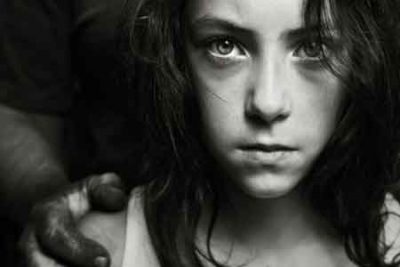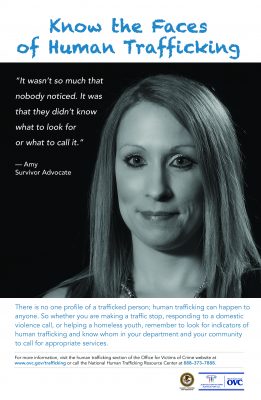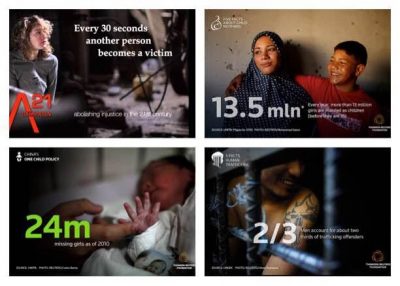By
Cynthia M. Lardner
The young lady doing your manicure, the young boy picking blueberries, your neighbor’s housekeeping, the hotel maid, the man harvesting grapes, the young man delivering flyers to your house, and the worker at the dry cleaners all have something in common: they are the victims of human trafficking.
Human trafficking victims are not limited to the sex trade and can be of any ethnicity. Human trafficking victims can be found in most, if not all, countries, including mainstream United States. To be point blank blunt, a slave could be as close as right next door.
Human trafficking has been receiving greater law enforcement and media attention. But, the truth is that the problem is so widespread that efforts to generate public awareness, train law enforcement officials at all levels and to create comprehensive programs for recovered victims, including a reintegration plan and wrap-around services have not yet risen to the level needed to effectively address this global problem.
This article provides information by which you can identify and report a potential slave.
By the Numbers
The statistics are glaringly alarming:
-
One out of every 236 persons is a human trafficking victim
-
There are an estimated 10-30 million slaves in the world, more than at any other point in history
-
As of 2010 24 million girls were missing
-
Every 30 seconds another person becomes a victim
-
80% of the victims are women
-
50% of the victims are under age 16
-
2 million children are trafficked annually
-
800,000 victims are annually transported over international borders
-
A female forced into the sex trade will be raped an average of 6,000 times, has a seven year life expectancy, with the odds of recovery a mere one out of 100
-
Forced labor accounts for 78% of those trafficked; only 22% wind-up in the sex trade
-
Human trafficking is the fastest growing criminal activity in the world second only to the drug trade
-
Annual profits from trafficking are $32,000,000,000
-
Slavery is an attractive crime because, unlike drugs, the ‘goods’ are reusable
-
Men account for two thirds of trafficking offenders
Overview
The Federal Bureau of Investigation provides the following thumbnail sketch of the problem:
“How are victims “recruited”? Sometimes by force, but usually by fraud. Victims are lured away from family and friends by the promise of a better life, often in another country. For traffickers, there’s no shortage of victims—people eager for higher-paying jobs and other opportunities in distant cities and nations.
What kinds of work are victims forced to do? Both legal and illegal. Everything from prostitution to exotic dancing…from street peddling to housekeeping…from child care to construction and landscaping. Some victims are forced to work in restaurants and factories and are drawn into servile marriages and various criminal activities.
How are victims controlled? Many different ways: physically, through beatings, burnings, rapes, and starvation; emotionally, through isolation, psychological abuse, drug dependency, and threats against family members in home countries; and financially, through debt bondage and threat of deportation.
Escape is difficult because victims are often “invisible”—in the U.S., for example, victims typically don’t speak English; they’re afraid to approach authorities because they don’t want to be deported; and they have no idea where they are or how to get help.
What about the traffickers? In the U.S., they’re often members of the victim’s own ethnic or national community…are here legally and maintain close contact with their home country…may be fluent in English and a native language…and may have greater social or political status in their home country than their victims[i].”
You can and should get involved by:
Becoming Educated:
“Victims of human trafficking come from all walks of life. Anyone can be a victim—regardless of race, color, national origin, disability, religion, age, gender, sexual orientation, gender identity, socioeconomic status, education level, or citizenship status. Although there is no defining characteristic that all victims share, traffickers frequently prey on individuals who are poor, vulnerable, living in an unsafe situation, or are in search of a better life[ii].”
-
Recognize the signs of human trafficking:
-
Abusive employment situation;
-
One person controlling another or a group (speaking for them; escorting them to/from work);
-
Employer in control of employee’s identification/immigration documents;
-
People locked inside a residence or workplace;
-
Someone unable to leave a particular job (forced to work there);
-
Threats to employee or employee’s family by employer;
-
“Debt” owed by employee to employer; and
-
Employee living in employer-owned or controlled residence[iii].
-
Preview the “Faces of Human Trafficking Preview Video”, which is one of nine short videos available. “The series is intended to be used for outreach and education efforts of service providers, law enforcement, prosecutors, and others in the community. The series includes information about sex and labor trafficking, multidisciplinary approaches to serving victims of human trafficking, effective victim services, victims’ legal needs, and voices of survivors[iv].”
Visit CNN’s Freedom Project, which contains a plethora of information, including factual information, and both charities providing services and hotlines listed by country.
Read the 2015 Trafficking in Persons Report[v], published by the United States Department of State. “The Trafficking in Persons (TIP) Report is the U.S. Government’s principal diplomatic tool to engage foreign governments on human trafficking. It is also the world’s most comprehensive resource of governmental anti-human trafficking efforts and reflects the U.S. Government’s commitment to global leadership on this key human rights and law enforcement issue. It represents an updated, global look at the nature and scope of trafficking in persons and the broad range of government actions to confront and eliminate it.”
Educate others:
Public education is the key to helping others understand the serious, widespread, and damaging nature of human trafficking and the only way this human rights violation will be reduced let alone eradicated.
Printing posters about human trafficking and posting them in your libraries, city halls, local courthouses, hotels, gas stations, strip clubs and even the grocery store. Posters can be found by searching “human trafficking posters” on Google or another search engine.
Report suspicious activity:
Report a potential human trafficking victim or situation by first calling 911, then call your local FBI office, the Department of Human Services at 1-866-DHS-2-ICE or the Department of Homeland Security at 1-888-373-7888. A two-step process is recommended as training of law enforcement officials at the local has yet to be completed and, in some communities, not even begun.
Do not attempt to intervene in a situation yourself.
Advocate:
While human trafficking is a global problem, most programs start at the community or grassroots level. Learn what’s available in both your country, state/province and community.
You and your friends can request to meet with or write to your local, state, and national level government[vi] representatives to let them know that you care about combating human trafficking in your community, and to inquire what they are doing to address human trafficking in your area. In the United States, while this is federal legislation, not every state has enacted legislation specifically addressing human trafficking[vii].
If programs or training are lacking, consider the following:
Ask that your local schools to partner with students by including the issue of modern day slavery in their curriculum.
Write a letter to the editor for your local paper about human trafficking in your own community.
Start a petition for legislation requiring papers containing sex ads, such as Backpage or Craig’s List to include information and warnings about human trafficking.
If there is not a program in your community, advocating for the creation of a comprehensive program[viii].
Advocate for the creation of a state or national anonymous tip lines. In Great Britain, Crimestoppers[ix] is a successful nonprofit organization where any crime can be anonymously reported. Anonymity increases the likelihood that an individual suspecting an incident of human trafficking will report it to law enforcement, as some people fear embarrassment or even recrimination if wrong, or being named in court papers if correct
Advocate for legislation shifting the criminal burden onto those who purchase sexual services of trafficked persons, and away from those who sell it, which reduces the demand for trafficking in human beings and sexual services. This model has been adopted in several European countries[x].
Advocate that travel and tour companies voluntarily implement ECPAT’s Tourism Child-Protection Code of Conduct, a set of business principles these companies can implement to prevent child sex tourism and trafficking of children[xi].
Get Involved:
Contact the National Human Trafficking Resource Center, your church, local shelters and local human services office for opportunities to volunteer or to offer victim support.
Be a Conscientious Consumer:
The United States Department of Labor has published a 39 page PDF List of Goods Produced by Child Labor and Forced Labor.
Learn about your own personal ‘Slavery Footprint’ by visiting http://slaveryfootprint.org/, which allows users to take a short quiz about their lifestyle, such as what they wear, eat, etc., and then calculates, based on that information, how many slaves work for that individual. The organization also offers a smartphone app at http://slaveryfootprint.org/about/#getapp [xii].
Businesses and investors should visit KnowTheChain, a resource for businesses and investors who need to understand and address forced labor abuses within their supply chain.
For more ideas read about “20 Ways You Can Help Fight a Human Trafficking”, an online resource made available by United States Department of State.
Conclusion
“The bottom line is that this is no time for complacency. Right now, across the globe, victims of human trafficking are daring to imagine the possibility of escape, the chance for a life without fear, and the opportunity to earn a living wage,” stated John Kerry, United States Secretary of State[xv].
Cynthia M. Lardner
Cynthia M. Lardner is a journalist, holding degrees in journalism, law, and counseling psychology. Her blogs are read in over 37 countries. As a thought leader in the area of foreign policy, her philosophy is to collectively influence conscious global thinking. Living in Den Hague or The Hague, she is currently looking for a challenging position in foreign policy, journalism, or social justice.








No Comments Yet!
You can be first to comment this post!